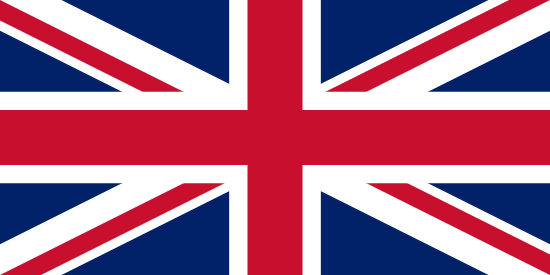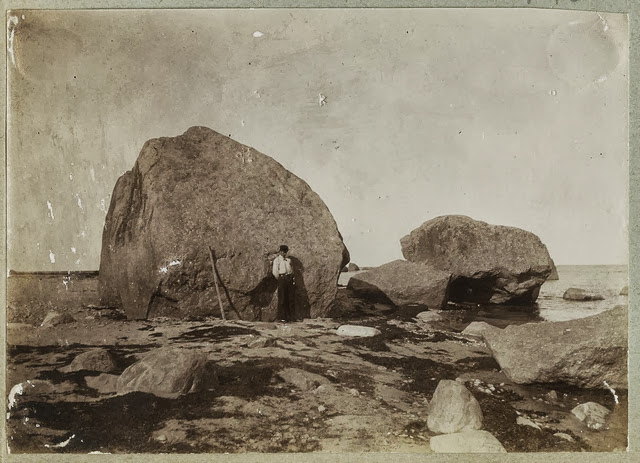
Whether you go up the coast or down near the ship, you will probably see a typical landscape element of the Estonian coast - glacial erratics. Come to one of them to a small town Käsmu in the heart of Lahemaa National Park and discover more about them and their origin.
Glacial Erratics
When you see a glacial erratic stone during your trips and journeys, you will probably recognize it immediately. It is totally different from its surroundings. It is because it does not originate from that place. It simply strayed from the far, far north. There are not many forces sufficiently large to move such large masses of rock tens, hundreds and often thousands of miles away. Perhaps only...yes, glaciers.
In much of the Quaternary, particularly in the Pleistocene (approximately between 2.6 million years old and 11.5 thousand years back), a large part of Europe was covered by a contiguous continental glacier (you can find something similar in Greenland). During the warming period glaciers began to slowly melt and freeze again. This cycle was repeated many times and a glacier often retreating from its position. (for example, in the times of interglacial age) and then reoccupied previously vacated places. This occurred in a kind of very slow motion.
As the ice slowly melted, it picked up and carried along both smaller and larger sediments from the surface of the bedrock on which rested. Using these sediments as cutting and grinding tools, it ‘ploughed‘ the ground it passed over, which due to the enormous weight of the glaciers are well observable. A typical example may be the Norwegian fjords with a distinctive "U" profile.
Some piecesof rock the glaciers ground up and destroyed while others were carried along in the ice flow. These stones then gradually travelled in the same direction as the retreating glacier, which retreated along the path of least resistance - in Europe, mainly to the south.
After the melting of the glaciers, worn rocks and stones found a new place, where they remain until the present day, or they were carried away to other glaciers in re-glaciation.
This makes it possible to see stray stones commonly seen not only in the Nordic and Baltic regions, but also in the area of Central Europe.
Fables and Legends
The above explanation, of course, was not always known and therefore ordinary people invented their own theories about the movement of such large stones. Apart from the purely fabulous stories (stones were brought by devils or thrown by cyclops) you can hear about theories of the Biblical Flood, which forever changed the face of the land. In this case we are fairly close to the correct explanation, which was discovered during the 19th century. Only the form of water was not liquid but solid.
Vana Jüri
Just a few minutes walk down the path and you will come to old glacial erratic. So old that it is called - Vana Jüri / Old George. The reddish rock is slightly pyramidal in shape and probably this is one of the largest fragments of a much bigger stone. Vana Jüri is a typical representative of the group of glacial erratic stones in northern Estonia and as such has been protected since 1939 as a major natural monument by the International Union for Conservation of Nature.
Questions
- Look closely at the structure of the Vana Jüri stone - what do you see? What is this stone made of? Is it comprised of variety of materials or is it consistent throughout?
- Find an entirely various stone nearby and examine it. What does the second stone appear to be made of?
- Compare your observations. Can you determine how to identify an foreign boulder from a native one?
- Voluntary condition: Take a picture with you near Vana Jüri and upload it to your log.
Please, write me all your answers on my email dan.beranek[email]gmail.com


Pikki Eesti rannikut soites näeb tüüpilisi maastiku elemente – rändrahne. Külasta ühte neist Lahemaa rahvuspargi südames Käsmus ja saa rohkem teada nende päritolu kohta.
Rändrahnud
Sa kindlasti tunned ära rändrahnu kui näed seda oma teekonnal. See erineb täielikult oma ümbruskonnast, sest see ei ole pärit siit. Rändrahnud on lihtsalt eksinud siia. Looduses ei ole palju neid joude, mis suudaksid liigutada sellise mastaabiga kive kümneid, sadu ja isegi tuhandeid kilomeetreid. Ainult liustikud.
Enamiku kvarternaar ajastu, eriti pleistotseeni ajastikul, suur osa Euroopa pinnast oli kaetud liikuva liustikega (midagi sarnast praeguse Gröönimaaga). Soojenemisperioodil liustikud hakkasid vaikselt sulama ning külmusid uuesti. See tsükkel kordus ning liustikest vabanenud alad kattusid taas jääga. See koik toimus väga aeglaselt.
Aeglaselt sulav jää vottis endaga kaasa suuremaid ja väiksemaid settekive. Kasutades neid settekive loike- ja lihvimisvahendina liustike sulamine ja külmumine kündis pinnast. . Parim näide liustike tööst on Norra fjordid oma u-tähe kujulise vormiga.
Osa kivimist jahvatati peeneks, kuid osa kive voeti endaga kaasa ja liikusid koos jääga Euroopa louna suunas.
Peale liustike sulamist seni kaasas kantud kivid leidsid omale uue paiga kuhu nad on jäänud tänaseni, voi liustike taganemine viis nad endaga kaasa tagasi pohja poole. Selle tottu on voimalik näha Skandinaaviale ja Balitimaadele tüüpilisi kivimeid kesk Euroopas.
Lood ja legendid
Enne teaduslikke seletusi pohjendati nende kivide liikumist ning päritolu lugude ja legendidega. Peale fantastilsite lugude, kuidas Vana- Kurat voi Ükssilm neid kive loopisid, leiab seletusi ka usuteemadel – suur uputus, mis muutis maa ilme. See seletus on tegelikult toimunule päris lähedal, eksiti vaid sellega, et vesi ei katnud maad vedelikuna vaid tahkel kujul jääna.
Vana Jüri
Paar minutit mööda rada edasiminnes jouate rändrahnu juurde. See on nii vana, et seda kutsutakse Vana-Jüriks. Punakas kivi on kergelt püramiidse kujuga ning see on toenäoliselt osa palju suuremast liustikega kaasa toodud kivist. Vana –Jüri on tüüpiline näide Pohja-Eesti rändrahnudest ning alates 1939. aastast on see ka looduskaitse all.
Küsimused
- Vaata hoolega Vana Jüri struktuuri. Mida sa näed? Millestest elementidest see kivi koosneb? Kas see kivi on moodustunud mitmest erinevast materjalist või ainult ühest?
- Leia lähedusest täiesti erinev kivi. Vaatle seda erinevatest külgedest ja kaugusest. Millest on teine kivi moodustunud?
- Võrdle mõlema vaatluse tulemusi ning millest sa järeldad, et üks kivi on rändrahn ja teine kohalik kivim. Saada vastus mulle.
- Vabatahtlik ülesanne. Tee endast voi oma seltskonnast Vana-Jüri taustal pilt ning lisa see oma logile.
Palun saada oma vastused mulle e-mailie dan.beranek[email]gmail.com (soovitavalt inglise).
Special thanks
- Translation: Baldric62 (EN), Kadri & Jon-Paul Barr (EE)
- The factual accuracy: Turko Team
Sources:
www.keskkonnaamet.ee
www.keskkonnainfo.ee
www.wikipedia.org
